Amensisa ifaBBC Africa, Addis Ababa
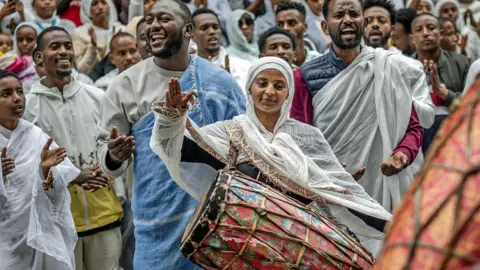 Lewis Tato/AFP/Getty Images
Lewis Tato/AFP/Getty ImagesEthiopia celebrates the beginning of its new year – 2018. The country has its own unique calendar, which means that it is seven years later in the Western calendar.
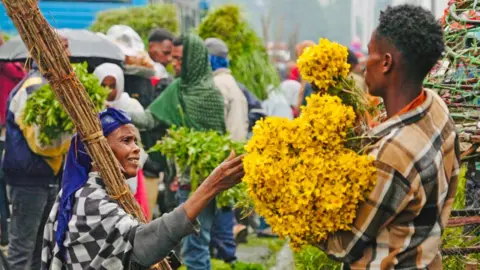 Amensisa ifa/bbc
Amensisa ifa/bbcThese yellow flowers are associated with the celebration. They are growing around the capital, Addis Ababa, at this time of the year. Small bouquets have been sold for about 50 Ethiopia Bir ($ 0.35; 0.25 pounds).
The seven -year gap is due to the fact that the year of the birth of Jesus Christ is calculated differently in Ethiopia. When the Catholic Church modified its account in 500 AD, the Ethiopian Orthodox Church was not.
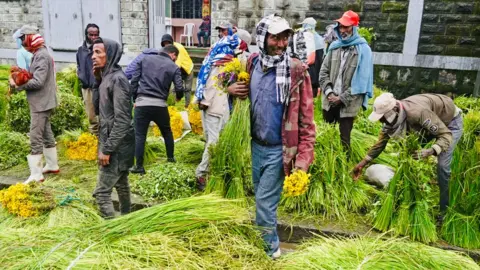 Amensisa ifa/bbc
Amensisa ifa/bbcBut the celebrations – known as Enkutatash – are not linked to the church, and for everyone in the country, it is time to celebrate. Here the sellers come in Addis Ababa from the countryside to sell Adey Ababa and also fresh grass – both of which are used during traditional coffee ceremonies.
The hometown of coffee is widely in the highlands in Ethiopia. The grass and flowers are used as a decoration for celebrations during which the beans are roasted on an open fire, then fermented in a clay bowl.
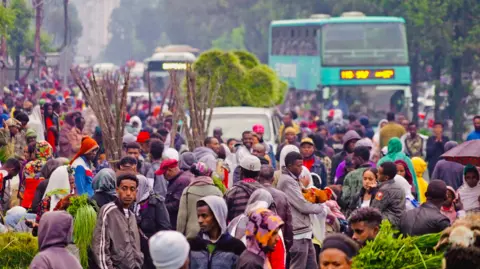 Amensisa ifa/bbc
Amensisa ifa/bbcThe shopping areas, including the Addiso market, were a journal, moving in Addis Ababa on the eve of the New Year, despite the rain – where people rushed to prepare for the celebrations.
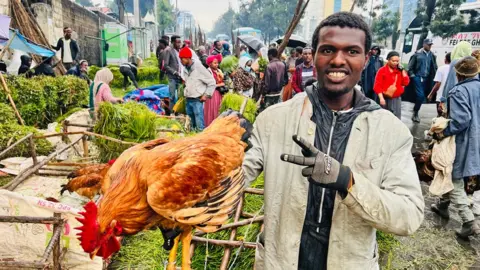 Amensisa ifa/bbc
Amensisa ifa/bbcThis is the 19 -year -old Tamrat Digin, who came to Addis Ababa from the small town of Chanko, about 40 km (25 miles) north of the city, to sell his chickens.
He told the BBC that he was making a huge trade – with the sale of chickens for between 2000 Birr ($ 14; 10 pounds) and 3000 Birr.
Prefer chicken for those who cook New Year’s Day over a budget. They make a hot soup called “Doro wat”, which is served with Injera – a traditional flat bread that looks like a pie.
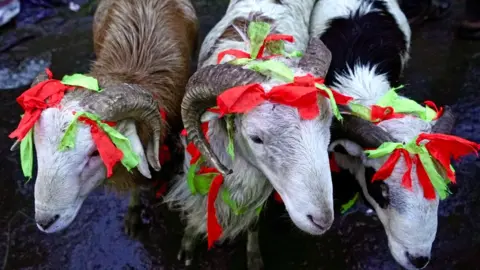 Amensisa ifa/bbc
Amensisa ifa/bbcFor those who have more money, lamb in the list – it is usually roasted.
These sheep, which were decorated in festive tapes by their owner, were selling between 15,000 Birr ($ 105; 77 pounds) and 22000 Birr.
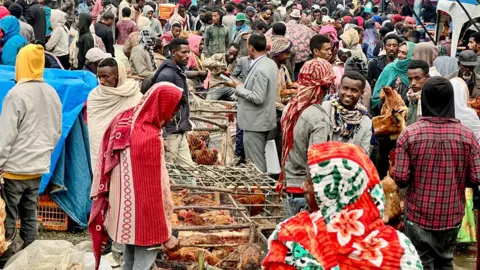 Amensisa ifa/bbc
Amensisa ifa/bbcFamilies tend to collect and invite friends to join them to eat Enkutatash either at lunch or in the evening – or both.
Some bulls, which can cost up to 300,000 Birr ($ 2000; 1550 pounds).
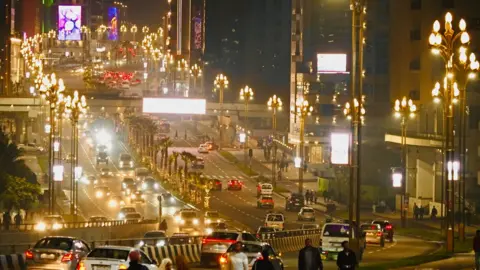 Amensisa ifa/bbc
Amensisa ifa/bbcOn the eve of the New Year, everyone rushes to finish shopping, then in the evening they go to watch concerts and live gangs. Here some concerts are announced in the largest place.
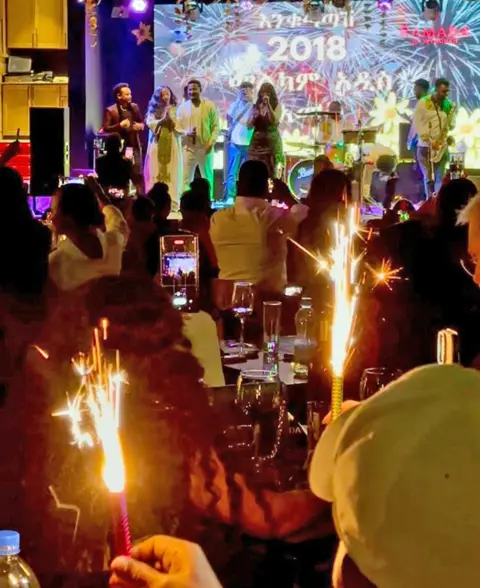 Amensisa ifa/bbc
Amensisa ifa/bbcI ended up in a hotel hall in Addis Ababa, where a live band in 2018 welcomed the music and the difference in the middle of the night.
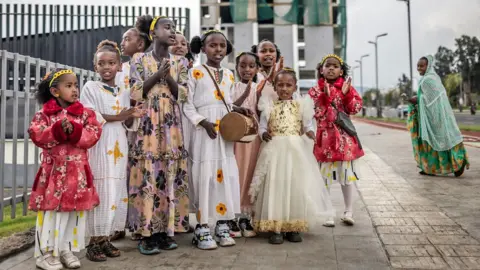 Lewis Tato/AFP/Getty Images
Lewis Tato/AFP/Getty ImagesOn the morning of New Year’s New Year, a traditional song known as “Abbayehosh” is heard throughout the city – usually the little girls of passers -by. In some neighborhoods they go to the door to the door.
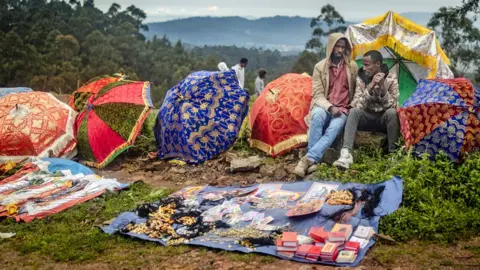 Lewis Tato/AFP/Getty Images
Lewis Tato/AFP/Getty ImagesThe song is deeply rooted in Ethiopian culture and picks up the spirit of the new year.
Orthodox Christians continue in this spirit later in the day with the services of the Church. Here the sellers created a booth for the sale of festive umbrellas near the church in the city.
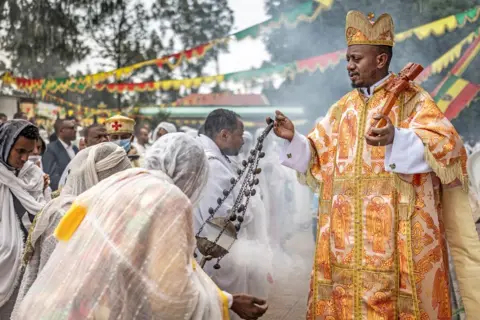 Lewis Tato/AFP/Getty Images
Lewis Tato/AFP/Getty ImagesA priest will join the group at the Addis Ababa Church in the Ento St Raguel Church on Thursday morning to provide prayers for the next year.
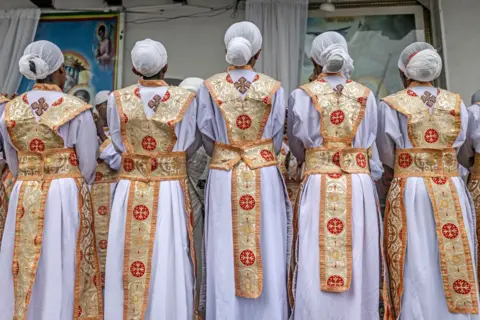 Lewis Tato/AFP/Getty Images
Lewis Tato/AFP/Getty ImagesPeople in Ethiopia do not have difficulty switching between the two calendars – when they speak in local languages, the year 2018, but in English they automatically jump until 2025.
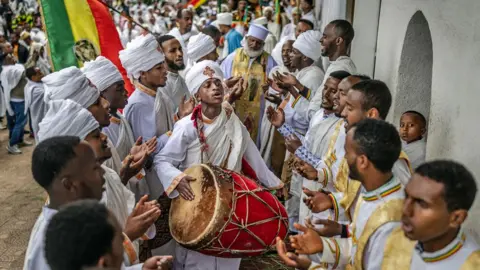 Lewis Tato/AFP/Getty Images
Lewis Tato/AFP/Getty ImagesAnother unusual aspect of the Ethiopian calendar is that it has 13 months. Its first first is 30 days, and this year was only five days (in the year of jump is six).
The time of the year also represents the end of the rainy season, the beginning of spring and celebrations that make up a season of renovation and optimism.
This year there was a greater feeling of loneliness and pride, as the week began with the official launch of the Grand Ethiopian Renaissance Dam, which was built on tributaries of the river.
You may also be interested in:
 Getty Images/BBC
Getty Images/BBC
https://ichef.bbci.co.uk/news/1024/branded_news/a1e6/live/26c38220-8f2e-11f0-84c8-99de564f0440.jpg
2025-09-11 16:22:00














